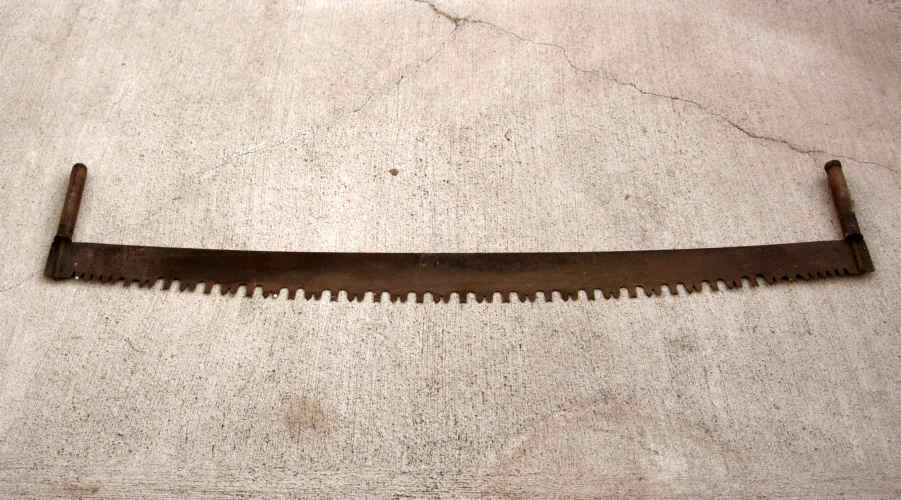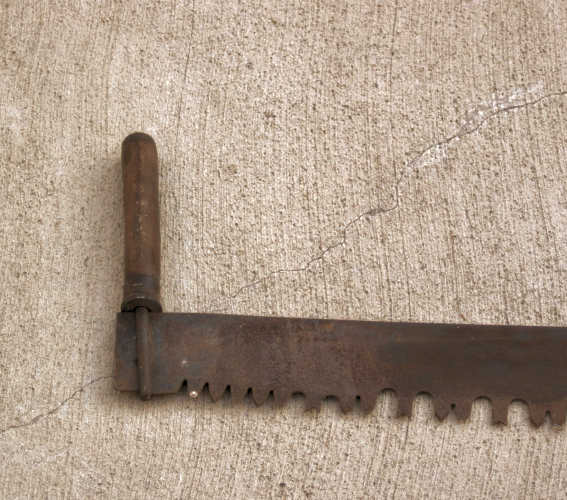

![]() The cross-cut saw was a tool that had to be operated by two men, forcing them to work together in unison; they were forced to cooperate or else they'd have problems.
The cross-cut saw was a tool that had to be operated by two men, forcing them to work together in unison; they were forced to cooperate or else they'd have problems.

![]() Before the gas-powered chain saw was invented, woodsmen used these long flat saws to cut down standing trees and also to cut a felled tree into manageable lengths. Each of two men would grasp their respective handles with both hands. Then, one of them would pull the saw forward, with the other man holding on but allowing the saw to be pulled away. As the saw reached its length and could be pulled no farther, the other man would tighten his grip and pull the saw toward himself. The first man, in turn, loosened his grip, allowing the saw to be pulled away from himself. This give and take, pull and release, continued until the tree was completely sawn through. The cross-cut saw was easier to use in cutting up a felled tree than in cutting down a standing tree. In the latter instance, the two men would be required to hold the saw horizontally, and it would have been difficult to apply pressure on the cutting edge. Cutting up a felled tree would take advantage of gravity to apply pressure on the cutting edge.
Before the gas-powered chain saw was invented, woodsmen used these long flat saws to cut down standing trees and also to cut a felled tree into manageable lengths. Each of two men would grasp their respective handles with both hands. Then, one of them would pull the saw forward, with the other man holding on but allowing the saw to be pulled away. As the saw reached its length and could be pulled no farther, the other man would tighten his grip and pull the saw toward himself. The first man, in turn, loosened his grip, allowing the saw to be pulled away from himself. This give and take, pull and release, continued until the tree was completely sawn through. The cross-cut saw was easier to use in cutting up a felled tree than in cutting down a standing tree. In the latter instance, the two men would be required to hold the saw horizontally, and it would have been difficult to apply pressure on the cutting edge. Cutting up a felled tree would take advantage of gravity to apply pressure on the cutting edge.

![]() The cross-cut saw shown here measures fifty-nine inches (just less than five feet) in length.
The cross-cut saw shown here measures fifty-nine inches (just less than five feet) in length.
